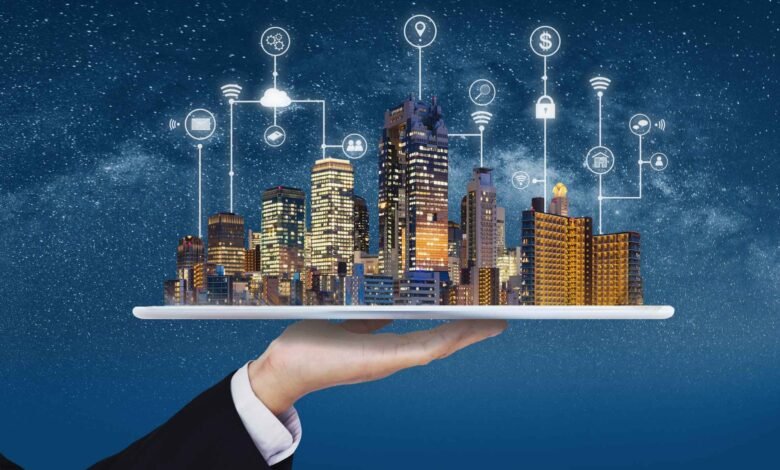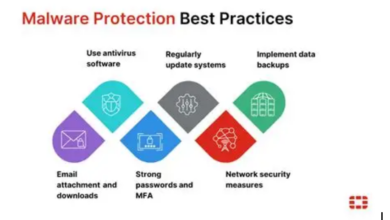Smart Cities: The Role of Technology in Urban Transformation

Smart cities represent the pinnacle of technological innovation applied to urban environments, designed to improve the quality of life for residents, streamline operations, and foster sustainable development. By leveraging advanced technologies such as IoT, AI, and big data, smart cities address modern urban challenges like congestion, pollution, and resource management. This article delves into how technology is revolutionizing urban spaces and shaping the future of smart cities.
What Are Smart Cities?
Smart cities are urban areas that integrate digital technology and data-driven solutions to enhance efficiency, sustainability, and quality of life. By interconnecting infrastructure, services, and citizens, smart cities aim to optimize resource usage, reduce environmental impact, and provide seamless services to their inhabitants.
Key characteristics of smart cities include intelligent infrastructure, data-driven decision-making, energy efficiency, and citizen engagement. These cities rely on advanced technologies to analyze and manage data in real time, ensuring that resources are allocated optimally.
See also: How Generative AI Is Redefining Creativity and Productivity
The Core Technologies Powering Smart Cities
1. Internet of Things (IoT): IoT devices are at the heart of smart city infrastructure, connecting various systems such as transportation, utilities, and public services. Sensors monitor real-time data, enabling automation and quick responses to changing conditions. For instance, IoT-driven smart grids enhance energy distribution, while smart waste bins alert sanitation teams when they need emptying.
2. Artificial Intelligence (AI): AI enables predictive analytics, resource optimization, and personalized citizen services. It powers systems like traffic management by analyzing congestion patterns and suggesting alternative routes. AI also supports public safety through intelligent surveillance systems that detect and alert authorities about unusual activities.
3. Big Data Analytics: Smart cities generate vast amounts of data from sensors, cameras, and public platforms. Big data analytics processes this information, identifying trends and insights that help policymakers make informed decisions. From urban planning to disaster response, big data ensures efficient city management.
4. 5G Connectivity: High-speed 5G networks form the backbone of smart cities, enabling instantaneous communication between devices and systems. Whether it’s autonomous vehicles or real-time health monitoring, 5G ensures seamless connectivity across the city.
How Smart Cities Are Transforming Urban Life
1. Efficient Transportation Systems
Smart cities revolutionize mobility through intelligent transportation systems. Real-time traffic data, automated toll systems, and ride-sharing platforms reduce congestion and improve commuting efficiency. Smart public transport systems offer real-time updates on schedules, making urban travel more predictable and accessible.
Autonomous vehicles, supported by advanced sensors and V2X (vehicle-to-everything) communication, are set to redefine urban mobility by reducing accidents and optimizing traffic flow.
2. Enhanced Energy Management
Sustainability is a core focus of smart cities, with technology enabling efficient energy management. Smart grids distribute electricity based on demand, reducing wastage and ensuring uninterrupted supply. Renewable energy sources such as solar panels and wind turbines are integrated into the grid, lowering carbon emissions.
Smart buildings use IoT to monitor energy consumption, optimizing heating, cooling, and lighting systems. Residents benefit from lower utility costs and a reduced environmental footprint.
3. Improved Public Safety and Security
Smart cities leverage technology to enhance safety and security. AI-driven surveillance systems monitor public spaces, identifying potential threats and assisting law enforcement in maintaining order. Smart emergency response systems reduce the time it takes to alert and deploy first responders during crises such as fires or medical emergencies.
Predictive policing, powered by AI and big data, helps authorities anticipate crime hotspots and allocate resources effectively, ensuring safer urban environments.
4. Waste Management and Environmental Monitoring
Smart waste management systems use IoT sensors to optimize collection schedules and reduce unnecessary trips by sanitation vehicles. Recycling processes are enhanced by AI-driven sorting systems that separate materials efficiently.
Environmental monitoring systems track air and water quality, enabling cities to take proactive measures against pollution. Citizens can also access real-time updates on environmental conditions, promoting awareness and responsible behavior.
5. Healthcare and Education Advancements
Smart cities prioritize health and education by integrating technology into these critical sectors. Telemedicine platforms provide remote consultations, while IoT-enabled devices monitor patients’ health in real time, reducing hospital visits.
In education, smart classrooms use AR, VR, and AI to create engaging and personalized learning experiences. Online learning platforms ensure that quality education is accessible to all, bridging gaps in resources and infrastructure.
6. Citizen Engagement and Participation
A key aspect of smart cities is fostering citizen participation. Mobile apps and platforms allow residents to provide feedback, report issues, and stay informed about local developments. Digital governance ensures transparency, making it easier for citizens to interact with government services.
Public Wi-Fi hotspots and digital literacy programs ensure that all residents, regardless of socio-economic background, can access the benefits of smart city initiatives.
Challenges in Implementing Smart Cities
While the vision of smart cities is promising, several challenges hinder their widespread adoption. High implementation costs and the need for significant infrastructure upgrades pose financial hurdles. Data privacy and cybersecurity concerns are significant, as interconnected systems are vulnerable to breaches.
Moreover, smart city initiatives require strong political will, cross-sector collaboration, and active citizen participation to succeed. Bridging the digital divide and ensuring equitable access to technology remain critical challenges.
The Future of Smart Cities
The future of smart cities lies in integrating emerging technologies such as quantum computing, blockchain, and edge computing. These innovations will enhance data security, optimize resource distribution, and improve decision-making processes.
As cities continue to grow, adopting a sustainable and inclusive approach to urban transformation will be essential. By prioritizing green technologies, equitable access to resources, and robust governance frameworks, smart cities can ensure a better quality of life for all residents.
FAQs About Smart Cities
1. What defines a smart city?
A smart city integrates digital technology, data analytics, and citizen-centric solutions to enhance urban living, improve efficiency, and promote sustainability.
2. What are the benefits of smart cities?
Smart cities offer improved transportation, energy efficiency, enhanced public safety, better waste management, and seamless citizen services.
3. How do smart cities impact sustainability?
Smart cities use technology to optimize resource usage, reduce emissions, and promote renewable energy solutions, contributing to environmental conservation.
4. Are smart cities expensive to implement?
Smart city projects require significant investment, but their long-term benefits, such as reduced operational costs and improved quality of life, outweigh the initial expenses.
5. What role do citizens play in smart cities?
Citizen participation is crucial in smart cities, as their feedback and engagement drive innovation and ensure that initiatives align with community needs.
6. How do smart cities address privacy concerns?
Smart cities must implement robust data protection laws and use technologies like blockchain to secure sensitive information while maintaining transparency.
Conclusion
Smart cities symbolize the transformative power of technology in shaping urban environments. By harnessing innovations like IoT, AI, and big data, they address contemporary challenges and create more efficient, sustainable, and inclusive communities. Although challenges exist, the potential of smart cities to improve quality of life and redefine urban living is unparalleled.



